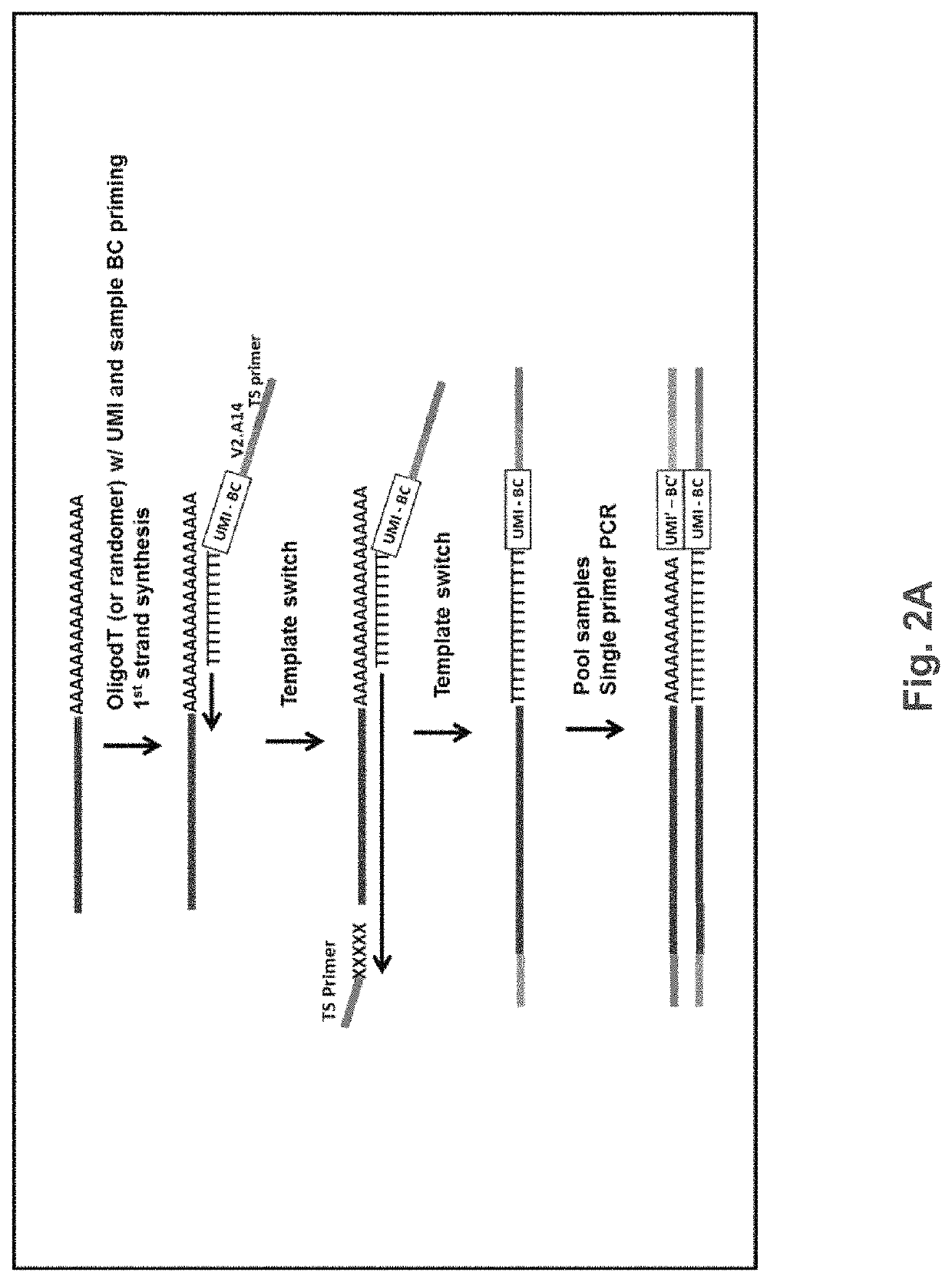Nucleic acid sequence analysis from single cells
a nucleic acid sequence and single cell technology, applied in the field of single cell nucleic acid sequence analysis, can solve the problems of inability to analyze alternative splicing, promoters and polyadenylation signals, limited sensitivity and dynamic range, and allow previously known genes to be analyzed
- Summary
- Abstract
- Description
- Claims
- Application Information
AI Technical Summary
Benefits of technology
Problems solved by technology
Method used
Image
Examples
Embodiment Construction
[0057]Presented herein are methods and compositions for multiplexed single cell gene expression analysis. Some methods and compositions include the use of droplets and / or beads bearing unique barcodes such as unique molecular barcodes (UMI).
[0058]Currently the most commonly used method for single cell RNA-Seq is based on CLONTECH™ SMART-SEQ™ technology or derivatives thereof. In short, an oligo(dT) primer primes the first-strand cDNA synthesis reaction. When the reverse transcriptase (SMARTSCRIBE™) reaches the 5′ end of the mRNA, the enzyme's terminal transferase activity adds a few additional non-template nucleotides to the 3′ end of the cDNA. A template-switch oligo, designed to base-pair with this non-template nucleotide stretch, anneals and creates an extended template to enable the RT continue replicating to the end of the oligonucleotide (FIG. 1).
[0059]The methods presented herein can include methods of generating tagged cDNA with sample-specific tags as described, for example...
PUM
| Property | Measurement | Unit |
|---|---|---|
| height | aaaaa | aaaaa |
| height | aaaaa | aaaaa |
| height | aaaaa | aaaaa |
Abstract
Description
Claims
Application Information
 Login to View More
Login to View More - R&D
- Intellectual Property
- Life Sciences
- Materials
- Tech Scout
- Unparalleled Data Quality
- Higher Quality Content
- 60% Fewer Hallucinations
Browse by: Latest US Patents, China's latest patents, Technical Efficacy Thesaurus, Application Domain, Technology Topic, Popular Technical Reports.
© 2025 PatSnap. All rights reserved.Legal|Privacy policy|Modern Slavery Act Transparency Statement|Sitemap|About US| Contact US: help@patsnap.com



